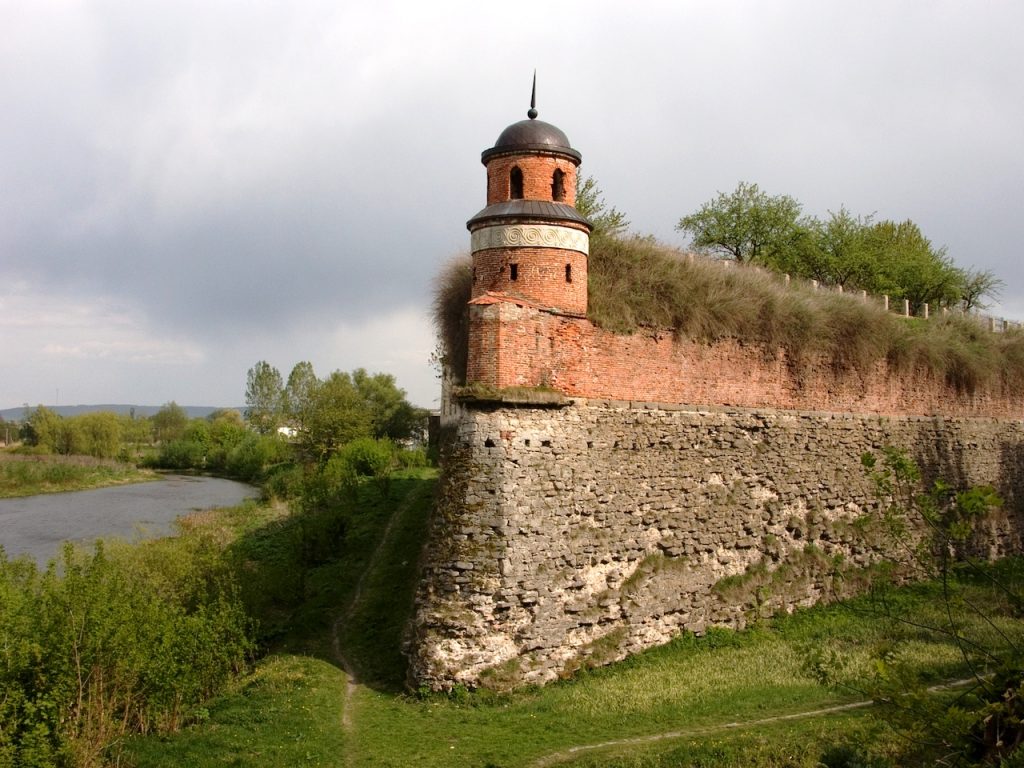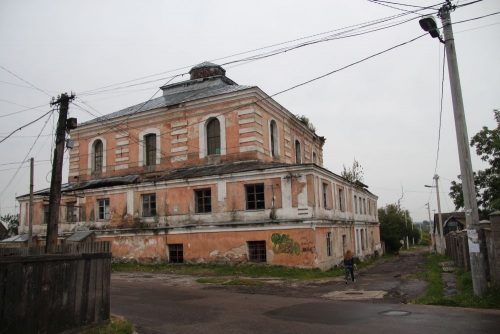Nash Holos: Dubno

The city of Dubno is located in the Rivne Oblast, or province, in western Ukraine. It sits on the banks of the Ikva River. The current population is around 38,000.
Dubno was first mentioned in a chronicle dated 1099, although it is thought to be even older. In the “Story of the Passing Years” the monk Nestor wrote of ancient Slavic tribes called Volhynians living in Dubno.
In the early 14th century it was annexed by Poland and became a royal stronghold guarding that country’s eastern border. Dubno was the site of a renowned castle, built by the Ostrozhsky family. In the 15th and 16th centuries, the castle was made into a modern fortress, one of the strongest in the area. The castle stood until it was destroyed in 1915 during World War I.
Granted city rights in 1498, the town attracted many foreign settlers, most notably Jewish and Armenian.
The Jewish community of Dubno is first mentioned in documents of 1532 in connection with the ownership of cattle. The oldest tombstone inscription in the Jewish cemetery dates from 1581.
During the Khmelnytsky Uprising of 1648-49, Dubno Castle was the scene of heavy fighting. Some of it was described by Nikolai Hohol in the novel Taras Bulba.
Most the 2,000 Jews in Dubno perished in the uprising. According to tradition the graves of the martyrs were located near the eastern wall of the great synagogue, where it was customary to mourn them on the fast of Tisha B’Av.
The Jewish community was re-established and by the beginning of the 18th century Dubno had become the largest Jewish community in the Volhynia region.

In 1794, the Great Synagogue was completed. From that year until 1819, three Jewish printed presses operated in the town, until closed due to a fire.
Jewish life in Dubno continued to flourish. In 1897 over 7,000 Jews were living in Dubno, about half the town’s population.
The main source of income for the Jewish community was commerce. Most of the local industrial and commercial enterprises belonged to Jews. The town had a Jewish hospital, several Jewish schools, Hasidic prayer halls and other institutions.
In the 20th century, progress came to a grinding halt.
During World War I, the city changed hands a number of times and suffered extensive damage. There was extreme economic hardship, as well as pogroms between 1917 and 1919.
In the 1920s Jewish economic life was revived with help from America. Local commerce was re-established, along with schools, an orphanage, a kindergarten, and a hospital. It didn’t last long.
In 1939, the Soviet Union annexed Dubno under the notorious Molotov-Ribbentrop Pact. Soviet authorities immediately liquidated Jewish community institutions, made all political parties illegal, transferred Jewish welfare institutions to the municipality and allowed only one Jewish activity – the public kitchen for refugees from the West. All Jewish economic enterprises and buildings were nationalized. Jewish leaders were arrested.
Then in June 1941 the Nazis arrived. On their way out, the retreating Soviets massacred over 500 prisoners of the Dubno prison.
In July, 1941, the Nazis murdered 80 Jews in the local cemetery, and a month later they killed 900. In 1942, the Nazis established two ghettos in Dubno then continued the killings. Between May and October, they murdered over 8,000 Jews.
Some Jews were spared and conscripted for forced labour, but succumbed to the unbearable conditions.
The Nazi occupation lasted until February 1944. Around 300 Jews managed to survive the massacres. On the eve of the Nazi invasion, about 12,000 Jews had been living in Dubno.
After the war, Dubno was given to Soviet Ukraine.
In June 14, 1993, the Ukrainian government founded the State Historical and Cultural preserve in Dubno. Included are several 18th and 19th century buildings as well as the synagogue.
In the 1990s, the few remaining Jewish families placed memorial plaques at sites of mass executions, and obtained the status of architectural monument for the synagogue’s building. By 2000, only about 10 Jews remained in Dubno.
Narrated by Peter Bejger
Listen to the program here.
Ukrainian Jewish Heritage is brought to you by the Ukrainian Jewish Encounter (UJE), a privately funded multinational organization whose goal is to promote mutual understanding between Ukrainians and Jews. Transcripts and audio files of this and earlier broadcasts of Ukrainian Jewish Heritage are available at the UJE website and the Nash Holos website.



















